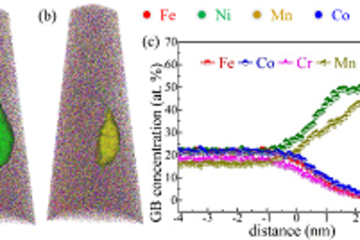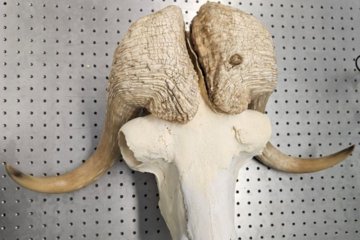All genres
361.
Talk
Novel electrodes for polymer based fuel cells. The 18th Israel Materials Engineering Conference (IMEC18), Dead Sea, Israel (2018)
362.
Talk
Microstructure evolution of Ag-alloyed PbTe for thermoelectric power generation. 18th Israel Materials Engineering Conference (IMEC-18), Dead Sea, Israel (2018)
363.
Talk
3D Nb3O7(OH) Nanoarrays – Structure, Stability and Functional Properties. Talk at Felix-Bloch-Institut für Festkörperphysik, Universität Leipzig, Leipzig, Germany (2018)
364.
Talk
First results on phase stability, microstructure and thermomechanical behavior of CrFeCoNi thin films. Seminar at Eric Schmid Institute, Leoben, Austria (2018)
365.
Talk
Combining high strength and moderate ductility in a novel ceramic coating: A combined ab initio and micromechanical study on Mo2BC. Conference on Electronic and Advanced Materials, EAM 2018, Orlando, FL, USA (2018)
366.
Talk
Evolution of faceted voids and fingering instabilities in a model thin film system - Insights by in-situ environmental scanning electron microscopy. Symposium - In situ Microscopy with Electrons, X‐rays and Scanning Probes, Universität Erlangen‐Nürnberg, Erlangen, Germany (2017)
367.
Talk
Atomic- and multiscale observation of segregation. Eindhoven Multiscale Institute (EMI) Symposium, Eindhoven University, Eindhoven, The Netherlands (2017)
368.
Talk
Thermal stability and phase transformation of nanostructured Nb3O7(OH) photocatalyst. Material Science & Technology (MST), Salt Lake City, UT, USA (2017)
369.
Talk
In-situ heating study on the growth of NiOx nanoparticles on photocatalytic supports. International GRK 1896 Satellite Symposium “In Situ Microscopy with Electrons, X-rays and Scanning Probes, Erlangen, Germany (2017)
370.
Talk
Influence of microstructure of Ag16.7Sb30Te53.3 bulk thermoelectric on their performance. 13th Multinational Congress on Microscopy, Rovinj, Croatia (2017)
371.
Talk
Nb3O7(OH) – a promising candidate for photocatalyst: synthesis, nanostructure and functionality. International Conference on Functional Nanomaterials and Nanodevices, Budapest, Hungary (2017)
372.
Talk
Observation of the Structural Transformation of Multinary Nanoparticles by In-situ Transmission Electron Microscopy. 13th Multinational Congress on Microscopy (MCM2017), Rovinj, Croatia (2017)
373.
Talk
In-situ electron microscopy: Insights in solid state dewetting of epitaxial Al thin films on sapphire. 13th Multinational Congress on Microscopy, Rovinj, Croatia (2017)
374.
Talk
1 Billion Tons of Nanostructure - Metastability Alloy Design and Segregation Engineering. 38th Risø Intern. Symp. Materials Science Advanced Metallic Materials by Microstructural Design , Roskilde, Denmark (2017)
375.
Talk
Sub-nanometer microanalysis on hematite photoanodes with localized Sn dopants to enhance photocatalytic water splitting. 13th Multinational Congress on Microscopy, Rovinj, Croatia (2017)
376.
Talk
In-situ electron microscopy: Insights in solid state dewetting of epitaxial Al thin films on sapphire. Microscopy Conference 2017 – Dreiländertagung (MC 2017), Lausanne, Switzerland (2017)
377.
Talk
Electron energy loss spectroscopy of black TiO2 nanowires. Microscopy Conference 2017 , Lausanne, Switzerland (2017)
378.
Talk
Atomic structure of a novel hard coating – transmission electron microscopy study of Mo2BC. Microscopy Conference 2017, Lausanne, Switzerland (2017)
379.
Talk
Metastability Alloy Design. 16th Intern. Conference on Rapidly Quenched and Metastable Materials (RQ16), Leoben, Austria (2017)
380.
Talk
Structural and functional properties of Nb3O7(OH) nanoarrays and their modification via doping and thermal annealing. Talk at Institut für Werkstofftechnik, Technische Universität Ilmenau, Ilmenau, Gemany (2017)











